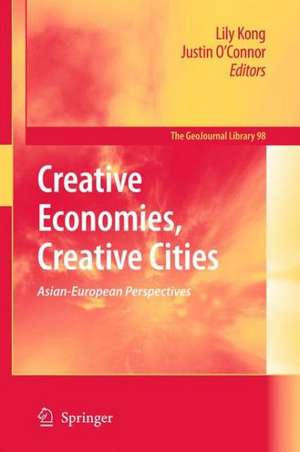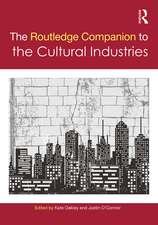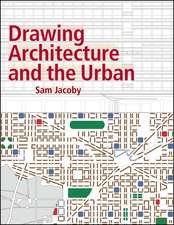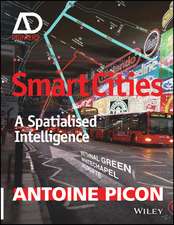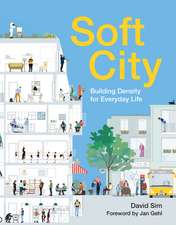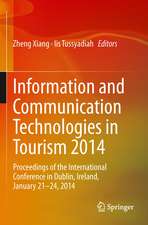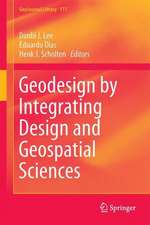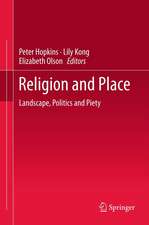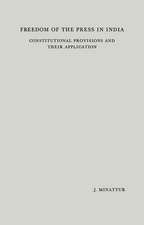Creative Economies, Creative Cities: Asian-European Perspectives: GeoJournal Library, cartea 98
Editat de Lily Kong, Justin O'Connoren Limba Engleză Paperback – 28 oct 2010
| Toate formatele și edițiile | Preț | Express |
|---|---|---|
| Paperback (1) | 942.13 lei 6-8 săpt. | |
| SPRINGER NETHERLANDS – 28 oct 2010 | 942.13 lei 6-8 săpt. | |
| Hardback (1) | 948.29 lei 6-8 săpt. | |
| SPRINGER NETHERLANDS – 28 mai 2009 | 948.29 lei 6-8 săpt. |
Din seria GeoJournal Library
- 15%
 Preț: 642.51 lei
Preț: 642.51 lei - 15%
 Preț: 632.70 lei
Preț: 632.70 lei -
 Preț: 396.78 lei
Preț: 396.78 lei - 18%
 Preț: 948.92 lei
Preț: 948.92 lei -
 Preț: 430.59 lei
Preț: 430.59 lei - 18%
 Preț: 899.69 lei
Preț: 899.69 lei - 15%
 Preț: 581.79 lei
Preț: 581.79 lei - 18%
 Preț: 938.34 lei
Preț: 938.34 lei - 18%
 Preț: 888.80 lei
Preț: 888.80 lei - 15%
 Preț: 703.85 lei
Preț: 703.85 lei - 18%
 Preț: 890.68 lei
Preț: 890.68 lei - 24%
 Preț: 777.63 lei
Preț: 777.63 lei -
 Preț: 400.65 lei
Preț: 400.65 lei - 18%
 Preț: 785.55 lei
Preț: 785.55 lei - 18%
 Preț: 946.55 lei
Preț: 946.55 lei - 15%
 Preț: 661.02 lei
Preț: 661.02 lei - 18%
 Preț: 945.79 lei
Preț: 945.79 lei - 15%
 Preț: 637.28 lei
Preț: 637.28 lei - 15%
 Preț: 637.59 lei
Preț: 637.59 lei - 15%
 Preț: 637.46 lei
Preț: 637.46 lei - 15%
 Preț: 635.31 lei
Preț: 635.31 lei - 20%
 Preț: 568.43 lei
Preț: 568.43 lei - 15%
 Preț: 645.79 lei
Preț: 645.79 lei - 20%
 Preț: 569.85 lei
Preț: 569.85 lei - 15%
 Preț: 651.99 lei
Preț: 651.99 lei - 15%
 Preț: 639.41 lei
Preț: 639.41 lei - 15%
 Preț: 643.48 lei
Preț: 643.48 lei - 15%
 Preț: 663.60 lei
Preț: 663.60 lei - 15%
 Preț: 651.99 lei
Preț: 651.99 lei - 15%
 Preț: 651.02 lei
Preț: 651.02 lei -
 Preț: 390.63 lei
Preț: 390.63 lei -
 Preț: 395.63 lei
Preț: 395.63 lei
Preț: 942.13 lei
Preț vechi: 1148.94 lei
-18% Nou
Puncte Express: 1413
Preț estimativ în valută:
180.27€ • 188.22$ • 149.20£
180.27€ • 188.22$ • 149.20£
Carte tipărită la comandă
Livrare economică 04-18 aprilie
Preluare comenzi: 021 569.72.76
Specificații
ISBN-13: 9789048182268
ISBN-10: 9048182263
Pagini: 244
Ilustrații: X, 234 p.
Dimensiuni: 155 x 235 x 13 mm
Greutate: 0.35 kg
Ediția:Softcover reprint of hardcover 1st ed. 2009
Editura: SPRINGER NETHERLANDS
Colecția Springer
Seria GeoJournal Library
Locul publicării:Dordrecht, Netherlands
ISBN-10: 9048182263
Pagini: 244
Ilustrații: X, 234 p.
Dimensiuni: 155 x 235 x 13 mm
Greutate: 0.35 kg
Ediția:Softcover reprint of hardcover 1st ed. 2009
Editura: SPRINGER NETHERLANDS
Colecția Springer
Seria GeoJournal Library
Locul publicării:Dordrecht, Netherlands
Public țintă
ResearchCuprins
Creative Economy Policies.- Policy Transfer and the Field of the Cultural and Creative Industries: What Can Be Learned from Europe?.- Creative Industries Across Cultural Borders: The Case of Video Games in Asia.- Creative Clusters.- Spaces of Culture and Economy: Mapping the Cultural-Creative Cluster Landscape.- Beyond Networks and Relations: Towards Rethinking Creative Cluster Theory.- The Capital Complex: Beijing's New Creative Clusters.- A Creative Class?.- The European Creative Class and Regional Development: How Relevant Is Florida's Theory for Europe?.- Getting Out of Place: The Mobile Creative Class Takes on the Local. A UK Perspective on the Creative Class.- Asian Cities and Limits to Creative Capital Theory.- The Making of Creative Cities.- The Creative Industries, Governance and Economic Development: A UK Perspective.- Shanghai's Emergence into the Global Creative Economy.- Shanghai Moderne: Creative Economy in a Creative City?.- The Politics of the Creative City.- Urbanity as a Political Project: Towards Post-national European Cities.- Alternative Politics in Urban Innovation.
Recenzii
From the reviews:
“Creative Economies, Creative Cities, an edited collection of articles by academics from Europe, the Far East and Australia, puts Florida’s thesis in global and historical context. The book mines a rich vein of debate that began long before 2002 about the effectiveness of the Creative Economy idea. … The book is a kind of echo chamber for academics and policy-makers … .” (Matthew J. Kiefer, ArchitectureBoston, September, 2009)
“One of the most valuable aspects of Creative Economies, Creative Cities is that it identifies questions from recent years about the cultural and creative industries, a sophisticated set of policy agendas regarding the development of creative economics and creative cities. … This collection should be read by policymakers interested in design and implementation of culture-led regeneration projects.” (Chang Bin Lee, International Journal of Cultural Policy, Vol. 17 (3), June, 2011)
“The book has a strong interdisciplinary approach–effectively reflecting the variety of topics and methods that characterise research in this area. … the book proves a solid contribution and some of the chapters included will become highly cited within the field. … it is the first attempt to adopt an inclusive view on the creative economy and give us a better understating of the creative economies discourses and creative city policies taking place in Asia. For this ground-breaking reason the book has to be praised.” (Roberta Comunian, Journal of Cultural Economics, Vol. 34, February, 2010)
“Creative Economies, Creative Cities, an edited collection of articles by academics from Europe, the Far East and Australia, puts Florida’s thesis in global and historical context. The book mines a rich vein of debate that began long before 2002 about the effectiveness of the Creative Economy idea. … The book is a kind of echo chamber for academics and policy-makers … .” (Matthew J. Kiefer, ArchitectureBoston, September, 2009)
“One of the most valuable aspects of Creative Economies, Creative Cities is that it identifies questions from recent years about the cultural and creative industries, a sophisticated set of policy agendas regarding the development of creative economics and creative cities. … This collection should be read by policymakers interested in design and implementation of culture-led regeneration projects.” (Chang Bin Lee, International Journal of Cultural Policy, Vol. 17 (3), June, 2011)
“The book has a strong interdisciplinary approach–effectively reflecting the variety of topics and methods that characterise research in this area. … the book proves a solid contribution and some of the chapters included will become highly cited within the field. … it is the first attempt to adopt an inclusive view on the creative economy and give us a better understating of the creative economies discourses and creative city policies taking place in Asia. For this ground-breaking reason the book has to be praised.” (Roberta Comunian, Journal of Cultural Economics, Vol. 34, February, 2010)
Textul de pe ultima copertă
The cultural and creative industries have become increasingly prominent on many policy agendas in recent years. Governments have identified the growing consumer potential for cultural/creative industry products in the home market, as well as for the growth of exports. The emphasis now lies on creativity, innovation, small business growth, and access to global markets – all in line with the move from cheap manufacture towards high value-added products and services. At the same time, the cultural and creative industries have become key drivers for urban regeneration and global repositioning of cities across Europe and Asia. Some of the themes, such as capital of culture, and attracting a ‘creative class’, have become global preoccupations. However, there are very real differences and ambiguities at play when such policy discourses move between historically distinct regions. By offering both Asian and European experiences, this volume shows the differences between them, and thus allowsmeaningful comparisons.
Caracteristici
The first to critically examine the intersection between creative industries and creative cities in Asia Provides critical and comparative perspectives between Asia and Europe Offers theoretical and theoretically informed empirical chapters
